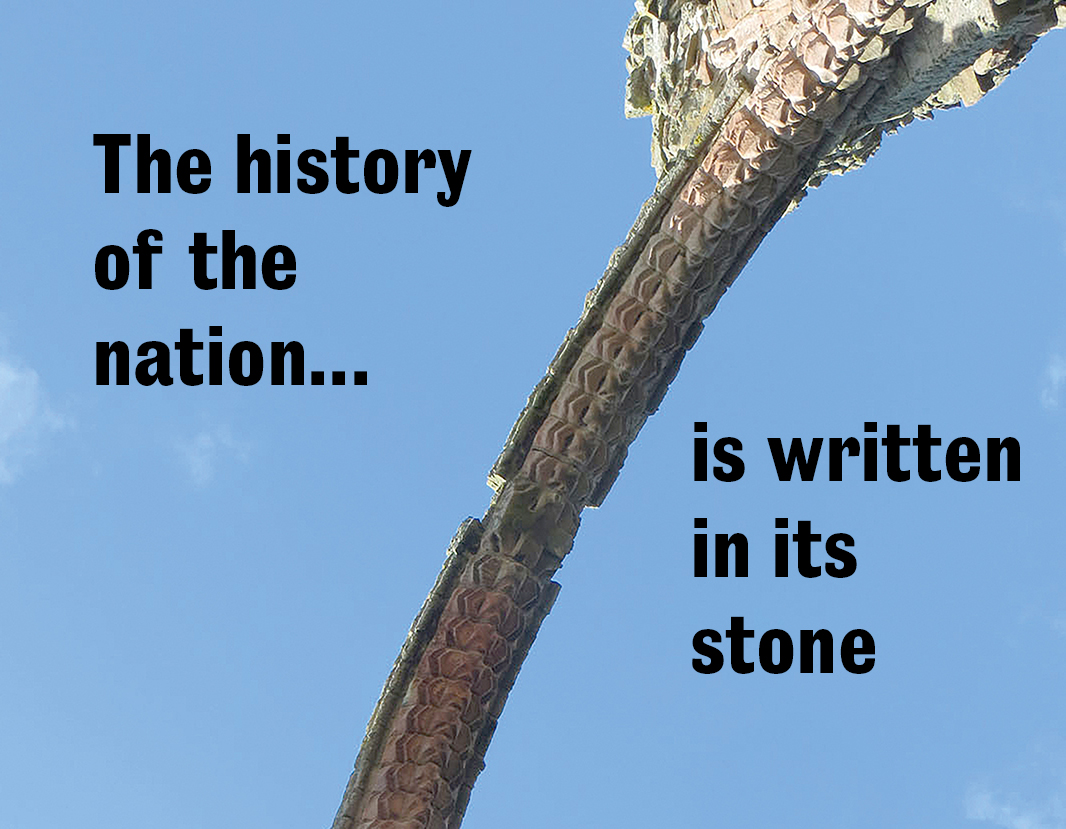It’s not a language everyone understands, but even those who cannot interpret its every nuance tend to appreciate its significance. Now the built heritage is also being asked to play its part in the fight against global warming.
When considering the interventions necessary to protect and conserve historic buildings it is necessary to determine the ‘significance’ of the building that must be retained, which covers more than simply the architecture. Lately there has been a new significance added to those considerations – the need to reduce the building’s contribution to global warming.
The fortnight of COP26 in Glasgow in November brought global warming into sharp focus once again. The protests and demonstrations during the event emphasise the growing level of concern about the issue in society generally.
Glasgow has in any case committed to achieving net zero by 2030, rather than the UK government target of 2050, and had a showcase tenement project highlighted during COP26 that could be a blueprint for re-using existing property by making it energy efficient without losing its character.
Residents of a pre-1918 eight-flat tenement in Glasgow’s southern Govanhill district have moved out while John Gilbert Architects embark on a scheme that has seen the interior stripped back to the bare walls and floors so they and the roof can be insulated and the windows triple-glazed.
Outside there has been some compromise as the sandstone on the back and side of the building is being covered in external cladding for further insulation so that air-source heat pumps will be effective enough to heat the properties.
The sandstone at the front has been left exposed to retain the historical character of the tenement.
The aim is to reduce energy bills by as much as 90% for the residents without losing the essential character of the building.
If the trade-off between energy efficiency and the retention of a relevant existing building is considered beneficial – and how the building functions will be monitored to see if it lives up to energy efficiency expectations – the scheme will be used to inform future tenement upgrades in the city. Whether it’s a trade-off that will be widely acceptable for Listed property generally will, no doubt, depend on the reaction to the finished project.
With construction and the built environment generally considered to account for about 40% of the UK’s greenhouse gas emissions, the government is clamping down on the construction industry and insisting that new houses will have to be net zero ready by 2025. That means they will have in place alternative heating systems such as heat pumps, even if they are not being used, and be 80% more energy efficient than houses are currently required to be. Similar constraints will follow on commercial buildings.
But probably around 80% of the buildings we will be occupying in 2050, which is the date by which the UK is committed to achieving net zero carbon emissions, have already been built and the bigger challenge is making these properties more energy efficient – and they tend to be less energy efficient the older they are.
Much of the heritage sector is greatly in favour of seeing more of the existing property stock retained and re-used, and if the Glasgow project can show ways that can be achieved, it will be welcomed.
It is not just the heritage sector that approves of existing buildings being retained and used. There is a growing appreciation that demolition and rebuild makes a significant contribution to greenhouse gas emissions because of all the new minerals extracted and products made to build anew. And although some demolition waste is re-used, much of it is simply thrown away, some of it adding to the world’s levels of human-created pollution.
Some of the grandest buildings – stately homes, schools, municipal buildings, cathedrals, churches and the like – will require rather more attention to preserving them as they are, but even in these properties moves are being made to reduce energy consumption. For example, a pilot scheme by English Heritage at Kenwood House is using dozens of unobtrusive, battery-operated sensors, which do not require wifi, to monitor environmental changes in the building. Artificial intelligence uses the information gathered to ‘learn’ what normal looks like so anything that consumes energy can be turned down or turned off when it is not needed.
The sensors enable English Heritage to identify performance issues in its mechanical and electrical plant, or catch minor leaks before they cause major problems.
The technology was monitoring Kenwood House throughout the pandemic, identifying key areas where cost savings and efficiencies can be made, as well as identifying how to optimise building services.
The pilot is part of a loss prevention innovation programme being run by Ecclesiastical Insurance with English Heritage and technology firm Shepherd in collaboration with the UCL Institute for Sustainable Heritage to give students studying for a Masters in Data Science for Cultural Heritage access to the readings from the pilot scheme.
English Heritage expects the technology to help it reduce by a quarter its £15million annual bill for maintaining the 400 or so sites it was left with when Historic England was separated from it in 2015.
The pilot was so successful that it was decided to continue it for another year and expand it so another nine energy-intensive historic sites across the country are monitored. They include Dover Castle, Wrest Park and Brodsworth House.
The heritage sector accepts it has a role to play in the move towards Net Zero and has issued a Joint Heritage Sector Statement on Climate Change in which it is stated: “We recognise that the scale of these challenges merits a collaborative response and we agree to work together to understand and address the impacts of climate change on the historic environment.”
It also says: “Responding to climate change requires action but that does not need to be at the expense of our cultural heritage, which can help society adapt to the dual challenges of new climates and a low carbon future.”
The statement involves a commitment to five carbon-cutting actions, to which the following organisations have signed up:
- Architectural Heritage Fund
- Churches Conservation Trust
- English Heritage Trust
- Historic England
- Historic Houses
- National Lottery Heritage Fund
- National Trust
- The Heritage Alliance
The five commitments are:
- Develop action plans to reach targets leading to carbon Net Zero before 2050.
- Work together to agree a set of measures aimed at understanding the effects of climate change on the historic environment and how best to adapt to those changes and mitigate the impacts where possible.
- Co-operate with collating and commissioning research, sharing results and lessons learned.
- Influence, support and promote wider climate change mitigation and adaptation, sharing knowledge and evidence with sectors such as construction and tourism.
- Articulate an evidence-based case for the importance of the historic environment in respect of the embodied carbon value of historic buildings and the particular contribution that the retention and re-use of old buildings makes, together with the sustainability of traditional building materials and design.
The final point about traditional building methods and materials being much less carbon intensive and environmentally damaging is something the Building Limes Forum has been making since it was formed and you can read more from the Forum in the report on its conference in November by clicking here.

Two of the latest in a long line of helpful publications from Historic England on taking care of the natural stones used in the built heritage.

